 Big Bend National Park, Texas, protects the diverse ecology of the area inside the “Big Bend” in the Rio Grande, the border between the US and Mexico.Big Bend, while technically situated in a desert area, is home to more than 400 species of birds and contains several different climate zones ranging from the Chihuahuan desert to lush highland forests in the Chisos Mountains. It was declared a Park in 1944.
Big Bend National Park, Texas, protects the diverse ecology of the area inside the “Big Bend” in the Rio Grande, the border between the US and Mexico.Big Bend, while technically situated in a desert area, is home to more than 400 species of birds and contains several different climate zones ranging from the Chihuahuan desert to lush highland forests in the Chisos Mountains. It was declared a Park in 1944.
Visitor Rating (write your own review below)
ILNP Rating![]()
Scenery![]()
Uniqueness![]()
Wildlife![]()
Diversity![]()
ILNP Park Review
In a Word “Diverse”
“The grasslands of the desert overflow; the hills are clothed with gladness.” -Psalms 65:12
Our Visit. Big Bend was the cornerstone of a two week tour we took to see the American Southwest during March. March is “high season” for Big Bend. The campgrounds were all full, but the Park didn’t have a crowded feel at all! This turned out to be a great time because it wasn’t too hot and the yuccas and many wildflowers were in bloom adding some refreshing color to the desert landscape. We visited the Park for two days (one full and two half days) and stayed in the tiny nearby town of Terlingua, Texas, just outside the west entrance.
Our Weather. The weather was warm (mid 80s) and mostly sunny with hazy skies.
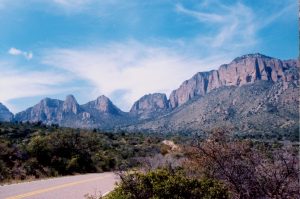
Driving up to the Chisos Basin (March)
Overall Impression. Surrounded by Mexico on three sides, Big Bend is one of the largest National Parks in the lower 48 states, but it is also one of the least visited Parks. Why?I have no idea, because it’s one of the most spectacular and surprising Parks I’ve been to! What amazed us most about Big Bend was its diversity.One moment, you’re driving through yuccas and prickly pear watching roadrunners dart after lizards, and the next thing you know, you’re driving through a pine forest looking up at incredible red cliffs which rival Zion National Park! There are so many breathtaking and fascinating areas in this Park, it’s difficult to know where to start. The Park’s only drawback (and it’s a big one for some) is the sheer remoteness of it. There are no major towns for 70+ miles, but you can still find most of what you’re looking for in the Park or nearby Terlingua. Bottom line: Big Bend was well worth the trek and is now one of my favorite Parks.
Favorite Spot. Toss up between Santa Elena Canyon and the Chisos Basin
Minimum Time Required. About 1/2 a day. This will allow you to drive into the park and visit one spot. If you’re only going to see one spot, the Chisos Basin (a thick forest high in the Chisos Mountains) is your best bet. Big Bend is remote, however, so if you’re going to drive there, you should plan on at least one full day in the park so you can see at least a couple of the different climate areas.
A Longer Visit. 2 to 3 days is highly recommended! There are four major road areas in Big Bend, each requiring about 1/2 a day, and you should plan to see them all. To really enjoy some of the areas, like Santa Elena Canyon, you’ll need to budget some time for hiking as well. If you only have a day and need to prioritize, we’d put them in this order: 1) The Chisos Basin, 2) Santa Elena Canyon, 3) Rio Grande Village, 4) Persimmon Gap. Your first priority should be to visit the Chisos Basin. For one, the Chisos Mountains are spectacular with deep red cliffs and exaggerated rock formations, but more interestingly, the vegetation changes swiftly from desert into a beautiful and large wooded area with its own set of hiking trails and sights.
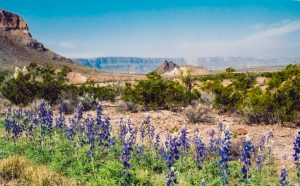
Most of Big Bend is desert, but that doesn’t mean the landscape is barren. When we went, the yuccas were in bloom, and there were wildflowers everywhere (March)
Suggestions. First, prepare for dry and hot conditions–bring plenty of water and sunscreen! Once you’ve seen the Basin, drive west towards Santa Elena Canyon. Enjoy some of the sights along the way (I especially liked Mule Ears Viewpoint), park at the canyon (the end of the road) and hike the 1/2 mile into the Canyon. You’ll be rewarded with a stroll through cool groves of trees, an overlook of the lazy Rio Grande and breathtaking views up at the 1,500 foot cliffs above you! We also really enjoyed the cool greenery of the Rio Grande Nature Trail at Rio Grande Village.On a clear day, you want to be within sight of Mexico’s Sierra del Carmen on the east edge of the park at sunset when the red cliffs are splendidly illuminated.
There isn’t much around Big Bend, but there is a restaurant and gas station in the Park. Terlingua is the nearest “town.” Even though it’s a tiny town, Terlingua has quite a few restaurants to choose from. We especially liked the BBQ at “la Kiva” and highly recommend it–the brisket and ribs are first rate! Big Bend is large. Be prepared for lots of driving. If you’re on the west side of the park, it’s tempting to shave off time by taking the Old Maverick Road (dirt); if you do, be ready for a ROUGH and dusty 12.8 miles–it’s not the best road to take your new BMW on.
While in Terlingua, we looked into a rafting trip down the Rio Grande through the Park. These ranged from half a day to a full day, and they varied dramatically based on the water conditions. One day, you can get a raft trip 22 miles through Santa Elena Canyon, the next, you can only get a 2 mile up-and-back in a canoe because the water has dropped. We decided against it based on cost and what was being offered that day, but we might have changed our minds if we could have gotten the 22-mile raft trip through the canyon.
Nearby Towns Terlingua, Marathon, Alpine (Texas)
Other Nearby Attractions Not much, Big Bend is out there!
Official NPS Website Big Bend NP
- Driving up to the Chisos Basin (March)
- The Chisos Mountains are the heart of Big Bend. It doesn’t show in photographs, but there’s more than 6,000 feet of vertical rise from the desert floor to the peaks (March)
- Inside the Chisos Basin is magical. You emerge from the desert to be surrounded by red cliffs and pine trees (on the other side of the camera, promise!) (March)
- Sunset from the middle of Big Bend (March)
- This sunset just kept going, and going. . . (March)
- Most of Big Bend is desert, but that doesn’t mean the landscape is barren. When we went, the yuccas were in bloom, and there were wildflowers everywhere (March)
- Mule Ears Peaks (March)
- The Chisos Mountains from a distance. It’s hard to believe they have nearly a 6,000 ft vertical rise (March)
- Inside Santa Elena Canyon (March)
- Santa Elena Canyon is fantastic! The Rio Grande has cut its way through 1,500 feet of red rock (March)
- The Rio Grande floodplain is also full of life. There’s a nice nature walk near Rio Grande Village that takes you through the reeds and small trees (March)
- When it rains, the desert turns green. The plants in front are Ocotillo which only sprout leaves after the rain. In the background are Mexico’s Sierra del Carmen (March)
Write Your Own Review

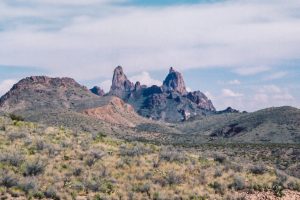
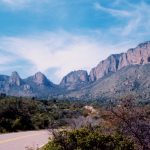
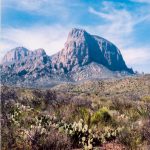
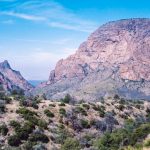

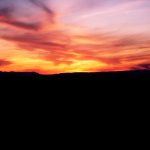
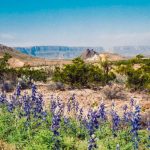
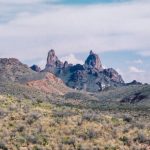

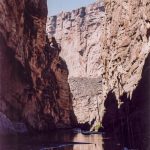
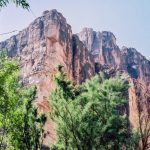
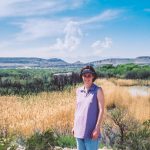
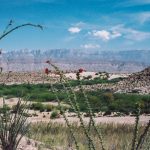
Please, please stop these photos and articles about Big Bend…I thought it was my secret. I don’t want anyone else coming down here.
Sorry I let your secret out, Joe. Big Bend is an awesome place that just begs to be shared!